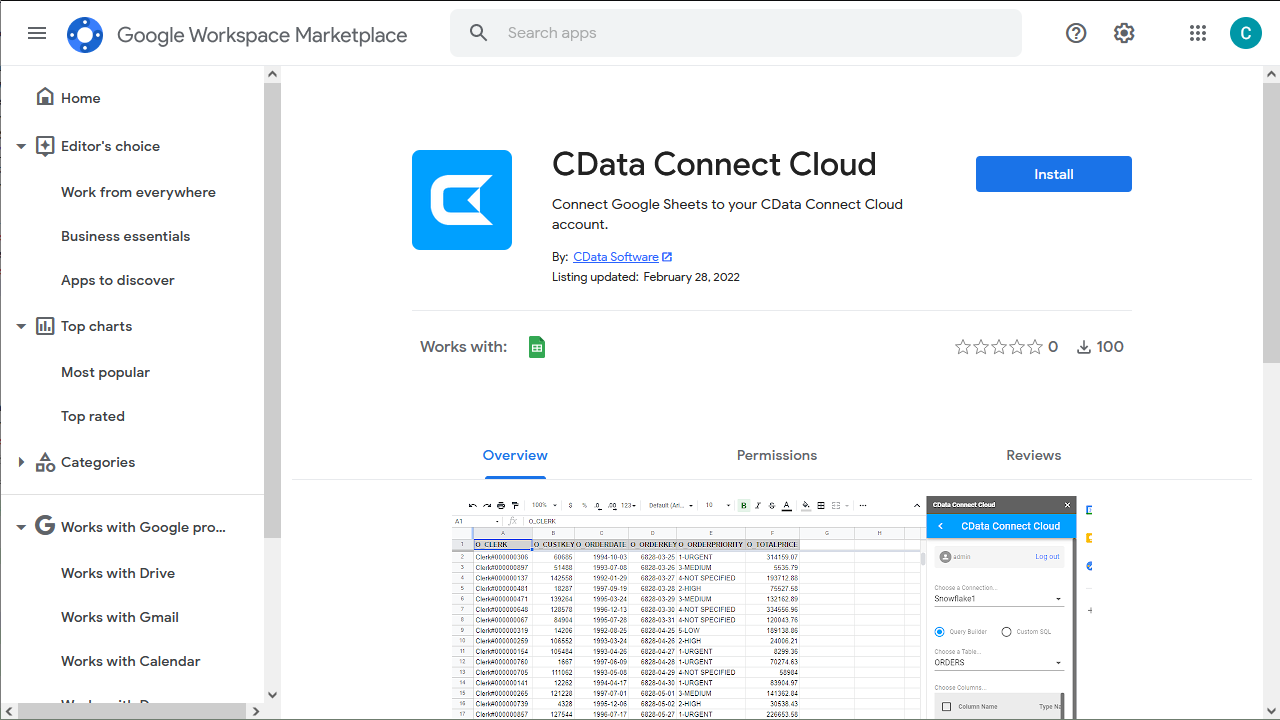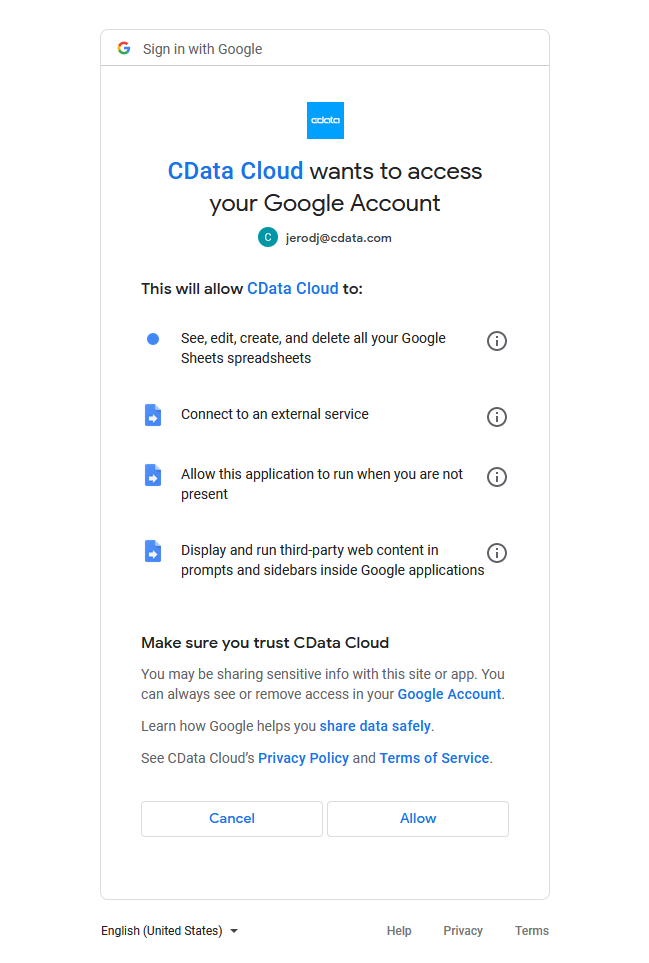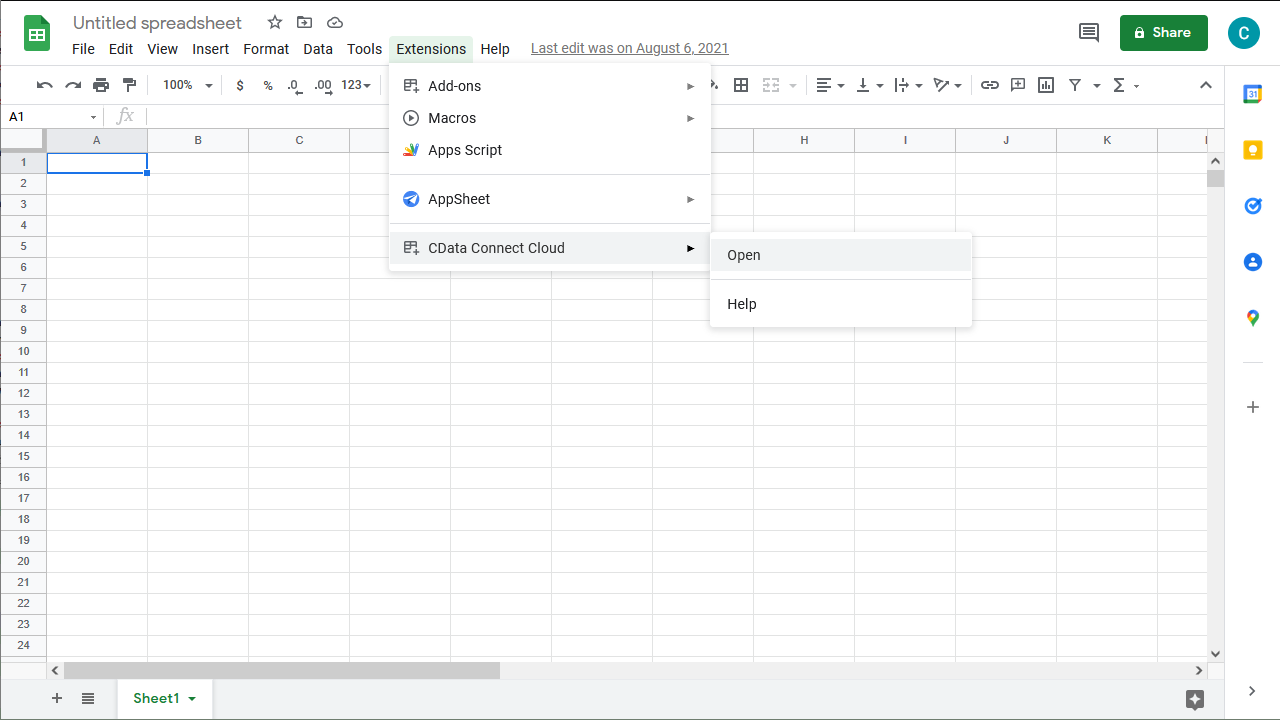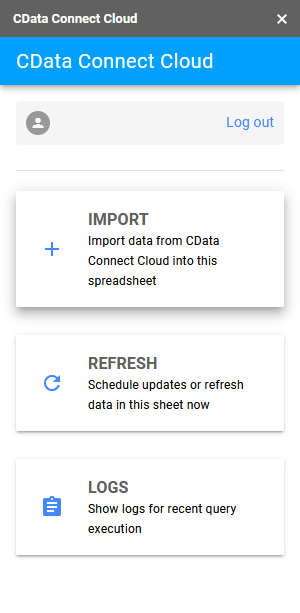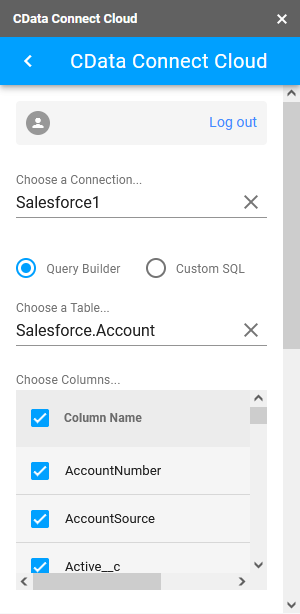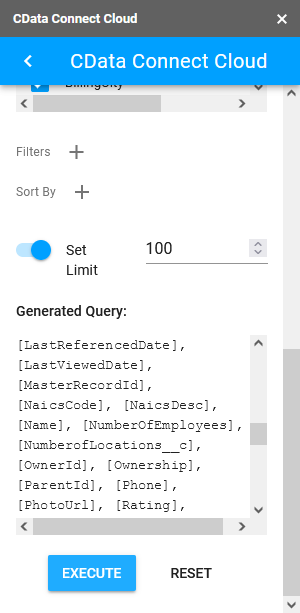Model Context Protocol (MCP) finally gives AI models a way to access the business data needed to make them really useful at work. CData MCP Servers have the depth and performance to make sure AI has access to all of the answers.
Try them now for free →Access Live HCL Domino Data in Google Sheets
Use CData Connect Cloud to gain access to live HCL Domino data from your Google Sheets.
Google Sheets is a web-based spreadsheet program provided by Google. When integrated with CData Connect Cloud, you can effortlessly gain access to HCL Domino data directly within Google Sheets for tasks such as data analysis, collaboration, calculations, and more. This article offers a comprehensive guide on connecting to HCL Domino within your Connect Cloud instance and accessing live HCL Domino data seamlessly within Google Sheets.
CData Connect Cloud offers a seamless cloud-to-cloud interface designed for HCL Domino, enabling effortless access to live HCL Domino data directly within Google Sheets. Use the dedicated Connect Cloud Google Sheets Plug-In to connect with live HCL Domino data. With built-in optimized data processing, CData Connect Cloud efficiently channels all supported query operations, including filters, JOINs, and more, directly to HCL Domino. This leverages server-side processing to promptly retrieve the desired HCL Domino data.
This setup requires a CData Connect Cloud instance and the CData Connect Cloud Add-On for Google Sheets. To get started, sign up a free trial of Connect Cloud and install the free Connect Cloud Google Sheets Add-On.
Configure HCL Domino Connectivity for Google Sheets
Connectivity to HCL Domino from Google Sheets is made possible through CData Connect Cloud. To work with HCL Domino data from Google Sheets, we start by creating and configuring a HCL Domino connection.
- Log into Connect Cloud, click Connections and click Add Connection
![Adding a Connection]()
- Select "HCL Domino" from the Add Connection panel
![Selecting a data source]()
-
Enter the necessary authentication properties to connect to HCL Domino.
Connecting to Domino
To connect to Domino data, set the following properties:
- URL: The host name or IP of the server hosting the Domino database. Include the port of the server hosting the Domino database. For example: http://sampleserver:1234/
- DatabaseScope: The name of a scope in the Domino Web UI. The driver exposes forms and views for the schema governed by the specified scope. In the Domino Admin UI, select the Scopes menu in the sidebar. Set this property to the name of an existing scope.
Authenticating with Domino
Domino supports authenticating via login credentials or an Azure Active Directory OAuth application:
Login Credentials
To authenticate with login credentials, set the following properties:
- AuthScheme: Set this to "OAuthPassword"
- User: The username of the authenticating Domino user
- Password: The password associated with the authenticating Domino user
The driver uses the login credentials to automatically perform an OAuth token exchange.
AzureAD
This authentication method uses Azure Active Directory as an IdP to obtain a JWT token. You need to create a custom OAuth application in Azure Active Directory and configure it as an IdP. To do so, follow the instructions in the Help documentation. Then set the following properties:
- AuthScheme: Set this to "AzureAD"
- InitiateOAuth: Set this to GETANDREFRESH. You can use InitiateOAuth to avoid repeating the OAuth exchange and manually setting the OAuthAccessToken.
- OAuthClientId: The Client ID obtained when setting up the custom OAuth application.
- OAuthClientSecret: The Client secret obtained when setting up the custom OAuth application.
- CallbackURL: The redirect URI defined when you registered your app. For example: https://localhost:33333
- AzureTenant: The Microsoft Online tenant being used to access data. Supply either a value in the form companyname.microsoft.com or the tenant ID.
The tenant ID is the same as the directory ID shown in the Azure Portal's Azure Active Directory > Properties page.
![Configuring a connection (Salesforce is shown)]()
- Click Create & Test
- Navigate to the Permissions tab in the Add HCL Domino Connection page and update the User-based permissions.
![Updating permissions]()
With the connection configured, you are ready to connect to HCL Domino data from Google Sheets.
Access Live HCL Domino Data from Google Sheets
The steps below outline connecting to CData Connect Cloud from Google Sheets to access live HCL Domino data.
- Log into Google Sheets, create a new sheet (or open an existing one).
- Click Add-ons and click Get Add-ons (if you have already installed the Add-on, jump to step 5).
- Search for CData Connect Cloud Add-On and install the Add-on.
![Install the Add-On]()
- Authorize the Add-On.
![Authorize the Add-On]()
- Back in Google Sheets, click Add-ons and open the CData Connect Cloud Add-On.
![Opening the Add-On]()
- In the Add-On panel, click Authorize to authenticate with your CData Connect Cloud instance
![Authenticating with CData Connect Cloud]()
- In the CData Connect Cloud panel in Google Sheets, click Import
![CData Connect Cloud panel in Google Sheets]()
- Choose a Connection (e.g. Domino1), Table (e.g. ByName, and Columns to import
![Cheesing a Connection, Table, and Columns]()
- Optionally add Filters, Sorting, and a Limit
![Filters, Sorting, Limits]()
- Click Execute to import the data
Live Access to HCL Domino Data from Cloud Applications
New, you have a direct, cloud-to-cloud connection to live HCL Domino data from your Google Sheets workbook. You can add more data to your workbook for calculations, aggregations, collaboration, and more.
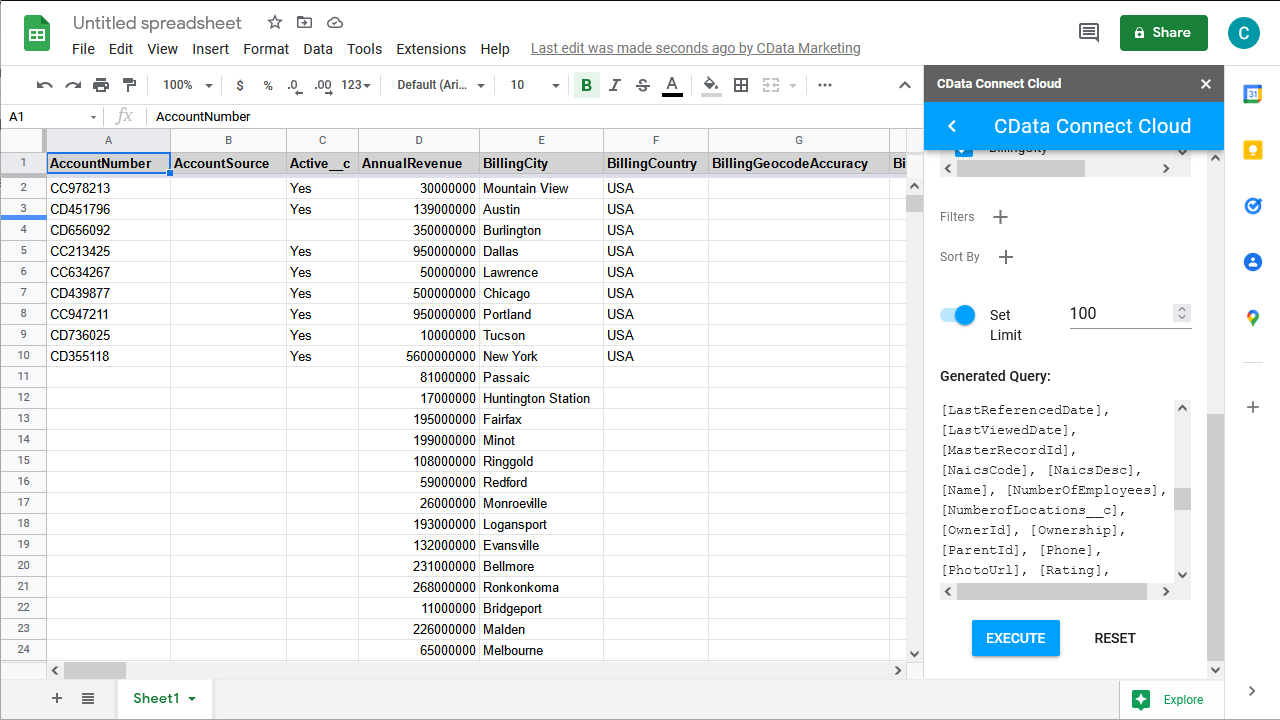
Try CData Connect Cloud and get real-time data access to 100+ SaaS, Big Data, and NoSQL sources directly from your cloud applications.





